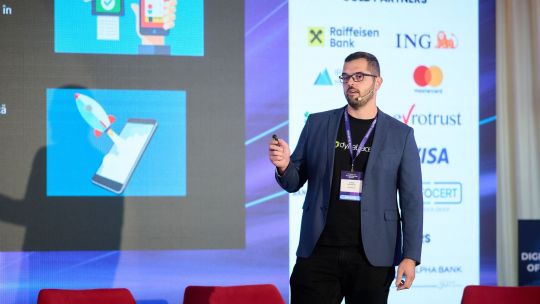Articole similare





Alessio Bulzoni, InfoCert: Din AI se naște inovația bancară, dar și noi tipuri de fraude
24 October 2024 | Team

Vladimir Ghiță, Fort: Niciodată un prinț din Arabia Saudită nu o să-ți dea 50 de miliarde de dolari
25 October 2024 | Luminița Mîndrilă

Ioan Negrea, fme: Businessul nostru ajută la migrarea datelor din sisteme vechi în sisteme noi
25 October 2024 | Team

Alexandru Ana: Sper ca IT-iștii să nu conducă băncile, dar mi-aș dori să aibă o „voce” mai puternică
27 October 2024 | Luminița Mîndrilă
Cele mai citite articole





